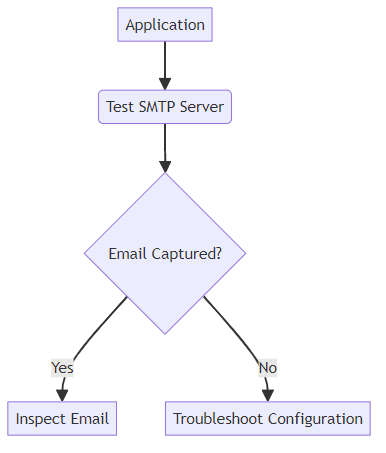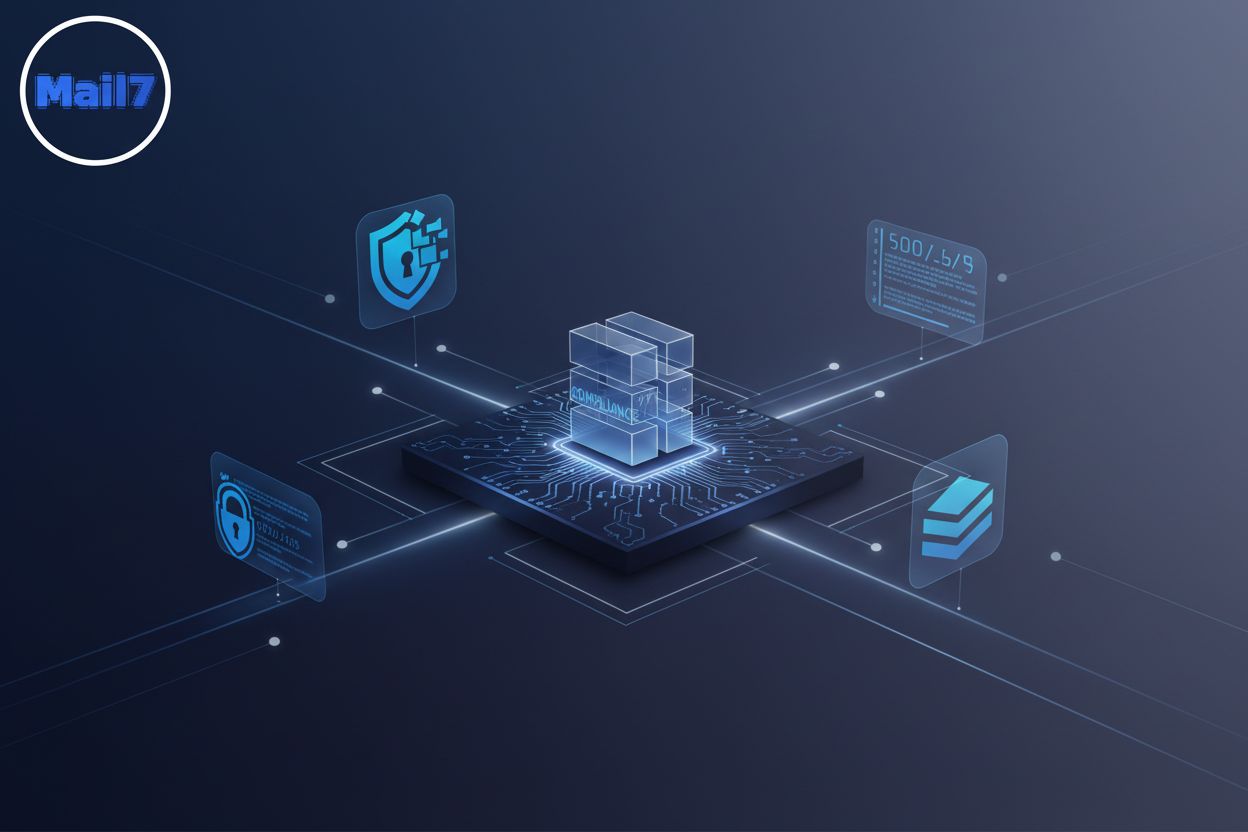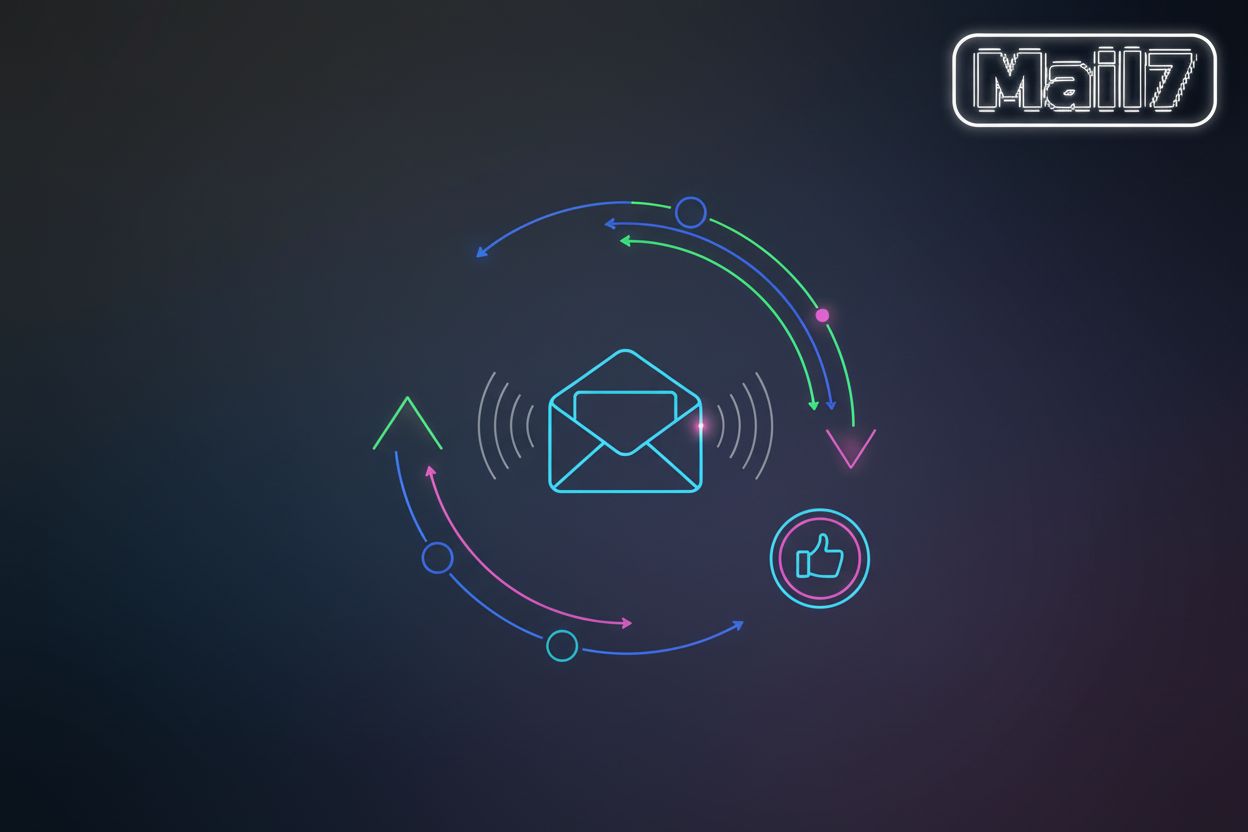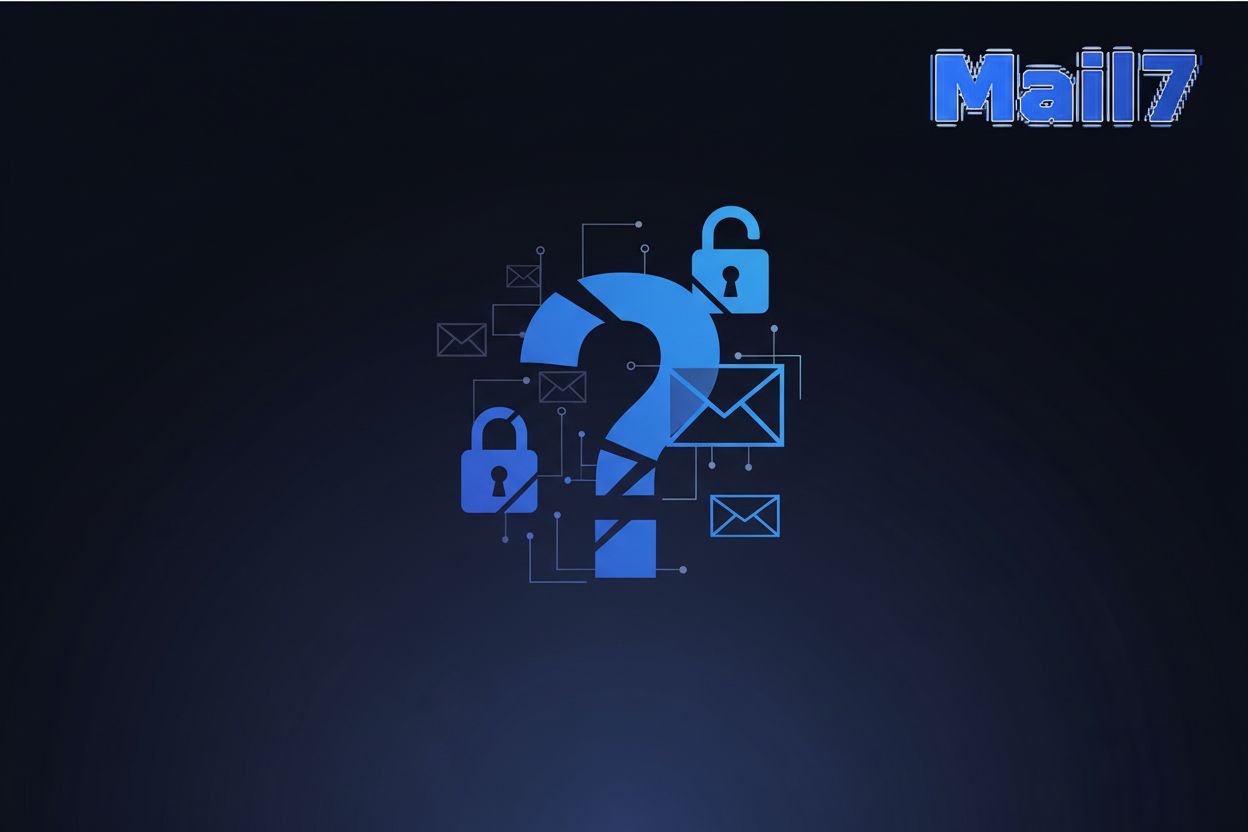Email Testing in CI/CD Pipelines: A Developer's Guide
Why Email Testing Matters in CI/CD
Imagine deploying a critical feature, only to discover your emails are broken. That's a recipe for frustrated users and lost revenue, right? Email testing in CI/CD pipelines helps prevent those nightmares. It makes sure your email communications are reliable, consistent, and secure throughout the whole development process.
- Ensuring reliable email delivery and content is super important. Your test emails should render correctly across all sorts of clients (think Gmail, Outlook, etc.) and devices. For example, a healthcare provider needs to confirm appointment reminders display correctly on patients' phones, while a retailer wants to make sure promotional emails aren't flagged as spam.
- Reducing manual testing effort makes QA way more efficient. Automating email tests frees up testers to focus on more complex stuff. Instead of manually verifying every email, QA can just create automated tests that run with each build.
- Preventing email-related bugs stops you from impacting users. A bug in a password reset email can actually lock users out of their accounts. Automated testing catches these issues before they hit production, saving your business from potential security breaches and compliance problems.
- Maintaining brand reputation means consistent communication. Consistent branding in emails builds trust with customers. Email testing verifies logos, colors, and messaging are accurate, no matter the context.
But, if you skip email testing, things can get messy:
- Lost conversions and revenue happen when emails don't get delivered. Imagine an e-commerce platform where order confirmations just don't send. Customers might think the order didn't go through, leading to abandoned carts and lost sales.
- Customer frustration and churn result from missing notifications. If a banking app fails to send transaction alerts, customers might get anxious about potential fraud.
- Security vulnerabilities can pop up from improperly formatted emails. Bad actors could exploit vulnerabilities in email parsing to launch phishing attacks. Solid email testing helps find and patch these security holes.
- Compliance issues relate to data privacy and regulations. Financial institutions must ensure their emails follow rules like GDPR and CCPA. Automated testing helps confirm sensitive data is handled securely and compliantly.
Integrating email testing early in the development process is key. By automating testing as part of your build, test, and deployment process, you can catch issues sooner.

Shifting email testing left and automating it within your CI/CD pipeline means faster feedback and continuous quality. Next, we'll look at how to set up your testing environment.
Setting Up Your Email Testing Environment
Setting up a good email testing environment is like building a solid foundation for your CI/CD pipeline. Without it, you risk deploying code that sends broken or undeliverable emails, which can really mess with user experience and your business reputation.
Picking the right tools is crucial for effective email testing. Look for solutions that offer disposable email addresses, smtp testing, and email verification features. Consider things like how easy it is to integrate with your current CI/CD pipeline, how good the reporting is, and pricing that fits your budget. Figure out if open-source or commercial solutions are a better fit for your organization's specific needs and what resources you have.
- Disposable email addresses are a lifesaver for not spamming real user inboxes during testing.
- Smtp testing lets you simulate sending and receiving emails without messing with live email servers.
- Email verification makes sure email addresses are valid, which cuts down on bounce rates and improves deliverability.
Mail7 has a Disposable Email Testing api designed to make your email testing workflow smoother. With Mail7, you can create disposable email addresses, get real-time emails, and automate your email testing using their developer-friendly api. Integrate Mail7 into your CI/CD pipeline for efficient and reliable email testing. Plus, you get enterprise-grade security with encrypted communications, keeping sensitive data safe during testing.
Mail7 provides unlimited test email reception
Setting up a dedicated smtp server for testing is essential to avoid disrupting production email delivery. Tools like Mailtrap or a local smtp server can capture and inspect test emails. Configure your application to use the test smtp server during CI/CD runs. Make sure you have proper authentication and security settings for the test smtp server.

As you set up your testing environment, remember that, according to a DevOps.com article, optimizing CI/CD pipelines means focusing on getting rid of bottlenecks and using smart automation.
With your email testing environment ready, you're set to start writing effective email tests.
Types of Email Tests to Automate
Did you know that a single email outage can cost a business thousands of dollars in lost revenue? Automating email tests in your CI/CD pipeline helps prevent those kinds of disasters. Here are the key email tests you should automate.
First, verify your application connects to the smtp server successfully.
- Test different authentication methods (like username/password or oauth) to confirm they work as expected.
- Ensure your application uses the right security protocols (tls, ssl) to protect sensitive data during transmission.
- Validate that the smtp server is properly configured with the correct port and hostname.
- Regularly check the smtp server's performance to avoid delays in email delivery.
Next, make sure the email content is accurate and displays correctly.
- Check the subject line, body, and headers for correct information and formatting. For instance, an e-commerce platform should verify that order confirmation emails include the correct order number and shipping address.
- Validate that all links and images in the email are working. Broken links in a promotional email can lead to lost sales.
- Ensure the email renders correctly across different email clients (Gmail, Outlook, Yahoo Mail) and devices.
- Verify that any dynamic content, like personalized greetings or product recommendations, generates and inserts correctly.
Finally, confirm emails reach their destination and aren't marked as spam.
- Test email deliverability to major email providers (Gmail, Outlook, etc.).
- Check if emails are being flagged as spam or junk by using tools like Mail-Tester to assess email deliverability and find potential issues.
- Validate that email authentication methods (spf, dkim, dmarc) are properly configured to prove your emails are legitimate.
Properly configured spf, dkim, and dmarc records help prevent email spoofing and improve deliverability.
Automating these tests helps maintain email quality and reliability. Now, let's explore strategies for efficient email testing workflows.
Integrating Email Tests into Your CI/CD Pipeline
Integrating email tests into your CI/CD pipeline can seem a bit daunting, but the payoff in reliability is huge. Imagine the peace of mind knowing your emails are tested with every code change, preventing embarrassing and costly errors.
Defining clear stages is the first step. Your CI/CD pipeline should have stages for building, testing, and deploying your application. Add email testing tasks specifically to the testing stage. This lets you catch email-related issues early in the development lifecycle.
Next, configure environment variables for sensitive information. Smtp server settings, api keys, and email credentials need to be handled securely. Store these as encrypted environment variables within your CI/CD tool. This stops you from hardcoding credentials directly into your test scripts.
Finally, leverage your CI/CD tool's capabilities. Jenkins, GitLab CI, and similar tools can run your email tests and report the results. This integration ensures email tests run automatically with each build, giving you continuous feedback.

Use programming languages like Python, JavaScript, or Ruby to create effective email test scripts. Pick the language that best fits your team's skills and existing codebase. This helps with maintainability and collaboration.
Leverage email testing libraries and frameworks to simplify test development. These tools provide pre-built functions for common email testing tasks. They handle complexities like smtp connections and email parsing.
Here's an example of using Python to check if an email contains specific text:
import smtplib
from email.mime.text import MIMEText
def check_email_content(email_address, expected_text):
# Connect to SMTP server (replace with your settings)
server = smtplib.SMTP('localhost', 1025)
server.starttls()
server.login('[email protected]', 'password')
# Fetch the email (replace with your method)
msg = MIMEText("Hello, this email contains the expected text.")
# Check if the expected text exists
if expected_text in msg.as_string():
return True
else:
return False
Configure your CI/CD tool to generate comprehensive test reports. These reports should clearly show the results of your email tests. Include details like pass/fail status, execution time, and error messages.
Set up notifications to immediately alert developers of failed email tests. Integrate email or slack notifications into your CI/CD pipeline. This ensures prompt awareness and faster resolution of issues.
Integrate test reports with monitoring and logging systems. This gives you a centralized view of your application's health and performance. Dashboards can track email testing metrics and trends over time.
With automated email tests integrated into your CI/CD pipeline, you gain confidence. Now, let's look at how to handle dynamic content and personalization in your emails.
Best Practices for Email Testing in CI/CD
Personalized emails can boost engagement, but how do you ensure they render correctly for every user? Effectively handling dynamic content and personalization in email tests is crucial for a smooth user experience.
Test your email templates with diverse data sets to confirm dynamic content renders properly. For example, a financial institution should test statements that include varying transaction volumes.
Verify date formats, currency symbols, and number precision are correct for different locales. A global e-commerce platform must ensure prices display correctly whether the customer is in Europe, Asia, or North America.
Ensure fallback mechanisms are in place for missing or invalid data. If a user's name isn't available, the email should gracefully display a generic greeting.
Confirm personalization features work as expected. Verify that personalized greetings, product recommendations, and tailored content display accurately for each user segment.
Test segmentation logic to make sure users receive the correct emails based on their attributes and behavior. A marketing automation platform should verify customers receive targeted promotions based on their purchase history.
Check that unsubscribe links and preference center options are personalized and functional. Users should be able to manage their email preferences easily.
Use mock data or test apis to simulate real-world scenarios. This lets you test how your emails behave under different conditions and edge cases.
Generate randomized data to simulate a large user base. This can help find performance bottlenecks and unexpected rendering issues.
Test integration with third-party services, like crm or marketing automation platforms. Ensure data flows correctly between systems and personalization is maintained.
Properly handling dynamic content and personalization in your email tests will help you deliver engaging, relevant experiences. Next, we'll explore best practices for email testing in CI/CD.
Troubleshooting Common Email Testing Issues
Is your email testing failing more often than it should? Don't let those frustrating issues derail your CI/CD pipeline. Here's how to troubleshoot some common email testing problems.
SMTP Connection Issues
A failed smtp connection can halt your entire email testing process. Start by checking the smtp server settings. Verify the server address, port, username, and password are correct. A misconfigured setting is a frequent culprit.
Next, confirm the smtp server is running and accessible. Use tools like telnet or ping to check if the server is reachable from your testing environment. If the server doesn't respond, there might be a network issue or the server could be down.
Firewall or network issues can also block the connection. Make sure your firewall allows traffic to the smtp server's port. Additionally, check for any network policies that might be interfering with the connection.
Finally, consult the smtp server logs for error messages. These logs often provide valuable clues about the cause of the connection failure. Look for authentication errors, connection timeouts, or other relevant information.
Email Rendering Issues
Emails that look great in one client can appear broken in another. To avoid this, use email testing tools to preview emails across different email clients. These tools show you how your email will render in Gmail, Outlook, Yahoo Mail, and other popular clients.
Identify and fix html/css compatibility issues. Email clients often have inconsistent support for html and css. Use inline styles and avoid advanced css features to ensure maximum compatibility.
Ensure images are properly sized and optimized for email. Large images can cause rendering problems and slow loading times. Optimize your images for web use and specify width and height attributes to prevent layout shifts.
Test email responsiveness on different devices and screen sizes. Mobile devices account for a significant portion of email opens. Use media queries to ensure your emails adapt to different screen sizes and resolutions.
Email Deliverability Issues
Even if your email looks perfect, it might not reach its intended recipients. Check your email authentication settings (spf, dkim, dmarc). Properly configured authentication helps prove your emails are legitimate and reduces the chance of being marked as spam.
Monitor your email reputation and blacklist status. A poor reputation can lead to deliverability problems. Use tools to check if your ip address or domain is blacklisted and take steps to improve your reputation if necessary.
Implement email warm-up strategies for new ip addresses. Gradually increase your sending volume to establish a positive sending reputation. This helps avoid being flagged as a spammer.
If your emails still aren't reaching inboxes, consider working with email providers to resolve deliverability problems. They can provide insights into why your emails are being blocked and help you improve your deliverability rates.
By systematically addressing these common email testing issues, you can improve the reliability of your CI/CD pipeline. Now, let's explore how to ensure email security and compliance in your testing process.
The Future of Email Testing in CI/CD
The world of email testing is evolving fast. Soon, ai and cloud technologies will transform CI/CD pipelines, making testing smarter and more efficient.
Here's what the future holds:
- Ai-Powered Email Testing: Ai can automatically generate test cases and pinpoint email issues. Machine learning will improve deliverability by enhancing spam filtering.
- Integration with Cloud-Native Technologies: Cloud-native tools like Kubernetes and serverless functions will enable scalable email testing. Cloud-based services will let you scale testing efforts on demand.
- The Rise of Visual Email Testing: Visual testing tools will automatically compare email screenshots, spotting rendering differences. Ai-powered image recognition will detect visual defects.
By embracing these advancements, developers can ensure reliable and consistent email communication. Continuous improvement in CI/CD pipelines is essential.
As Mudit Singh, VP of Product at LambdaTest, noted, many assumed challenges, like integrating automated tests, persist.
Keep refining your email testing strategy to keep pace with these changes.





